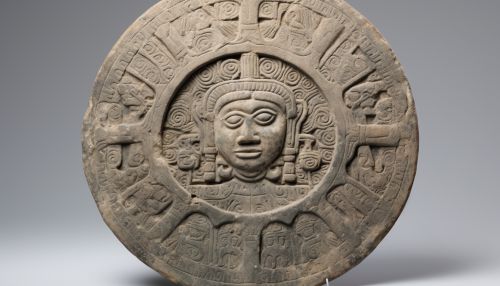Aztec calendar stone
Origins and Discovery
The Aztec calendar stone, also known as the Sun Stone, is one of the most iconic artifacts from ancient Mesoamerica. It was discovered in December 1790 in the main square of Mexico City, buried beneath the surface of the Zócalo. The stone, carved from basalt, measures approximately 3.58 meters in diameter, 1.22 meters in thickness, and weighs around 24 tons.


Design and Symbolism
The stone is intricately carved with various symbols and images that represent the Aztec cosmology. The central figure is the face of the sun god, Tonatiuh, who is shown holding a human heart in each hand. Surrounding Tonatiuh are four squares representing the four previous ages, or "suns," of Aztec mythology, each one associated with a different deity and a different catastrophic end.
Further out, the stone is divided into 20 sections, each representing a day of the Aztec month. These are interspersed with symbols representing the 13-day week, another important cycle in the Aztec calendar. The outermost ring of the stone is composed of two fire serpents, their tails at the bottom of the stone and their heads meeting at the top.
Function and Interpretation
The exact function of the Aztec calendar stone is a matter of debate among scholars. Some believe it was used as a ceremonial basin or a sacrificial altar. Others argue that it was primarily a cosmological device, used to track the movements of celestial bodies and predict future events.
The stone's complex symbolism has also been the subject of much interpretation. It is generally agreed that the stone represents the Aztec conception of time and space, with the cycles of the calendar and the mythological ages of the world. However, the specific meanings of many of the symbols and images on the stone remain a topic of ongoing research.
Legacy and Influence
The Aztec calendar stone is a significant artifact in the study of Mesoamerican cultures. Its discovery in the 18th century sparked a renewed interest in the ancient civilizations of the Americas, and it has since become a symbol of Mexican heritage and identity.
The stone's intricate design and symbolism have also influenced modern art and culture. It has been reproduced in various forms, from jewelry and tattoos to large-scale sculptures and public monuments. Despite its age, the Aztec calendar stone continues to inspire and fascinate, a testament to the sophistication and complexity of Aztec civilization.
